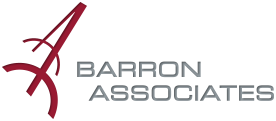NASA Phase I Selected for Award: Low-SWaP and Low-Cost Autonomous Landing Area Confirmation Scan (AutoLACS) Tool
The air transportation system is on the verge of drastic change. Companies are envisioning Advanced Air Mobility (AAM) operations, providing “air-taxi” and cargo services. AAM and other future operations will require new approaches to address long-standing issues that have, to date, been handled by well-trained pilots. Among the most important is the ability to autonomously confirm the suitability of a planned landing area prior to landing. The proposed autonomous Landing Area Confirmation Scan (AutoLACS) emulates the perception, cognition, and decision making of expert operators to provide an autonomous onboard capability to confirm the suitability of an intended landing area (runway, helipad, vertiport, off-field, etc.). The key AutoLACS innovation is the use of low-cost and low-SWaP digital camera imagery (topographic photogrammetry), together with publicly available LiDAR data, to rapidly identify hazards (vehicles, persons, etc.) in an intended landing area and to use this information to inform a multi-objective go-around/rejected-landing decision.
